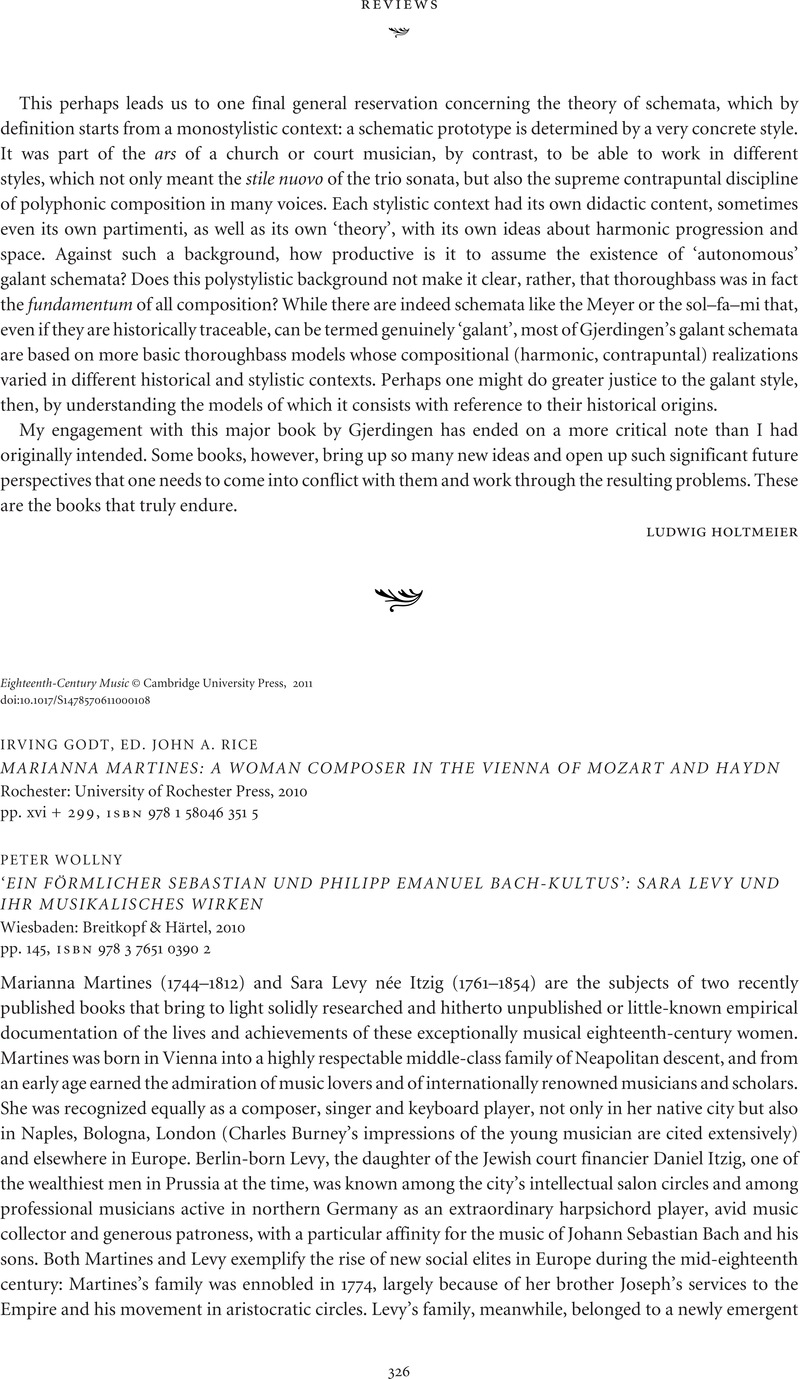No CrossRef data available.
Article contents
IRVING GODT, ED. JOHN A. RICE MARIANNA MARTINES: A WOMAN COMPOSER IN THE VIENNA OF MOZART AND HAYDNRochester: University of Rochester Press, 2010 pp. xvi + 299, isbn978 1 58046 351 5 - PETER WOLLNY ‘EIN FÖRMLICHER SEBASTIAN UND PHILIPP EMANUEL BACH-KULTUS’: SARA LEVY UND IHR MUSIKALISCHES WIRKENWiesbaden: Breitkopf & Härtel, 2010 pp. 145, isbn978 3 7651 0390 2
Published online by Cambridge University Press: 25 July 2011
Abstract
An abstract is not available for this content so a preview has been provided. Please use the Get access link above for information on how to access this content.

- Type
- Reviews: Books
- Information
- Copyright
- Copyright © Cambridge University Press 2011




